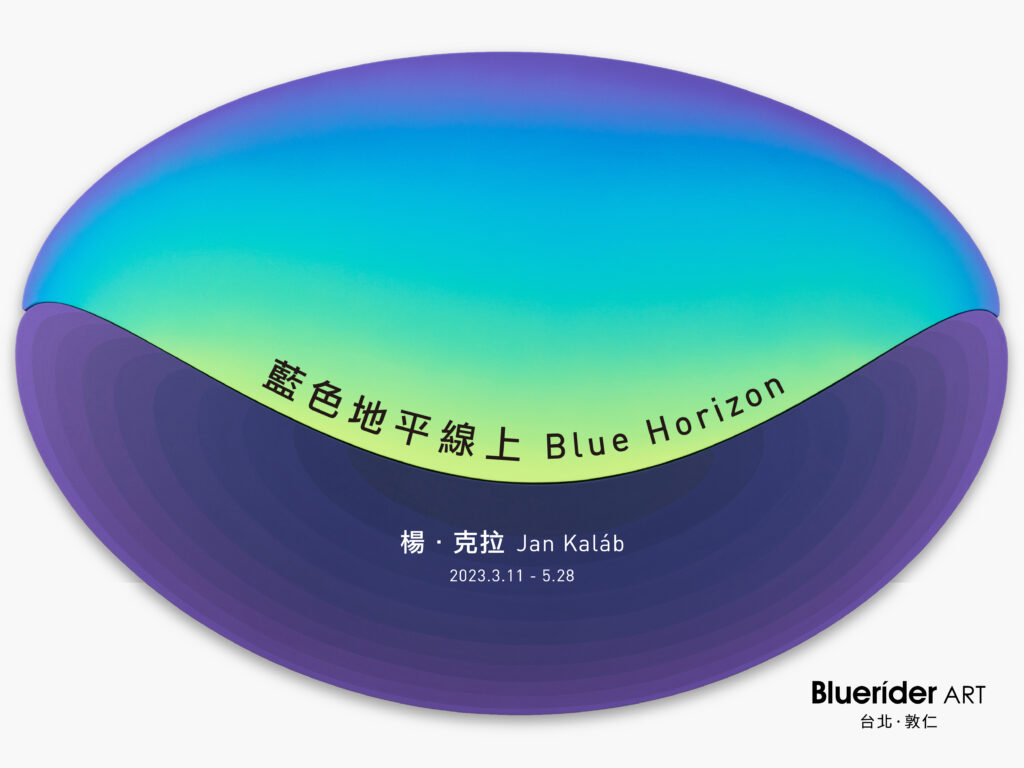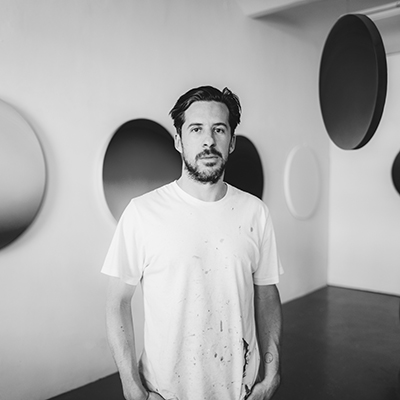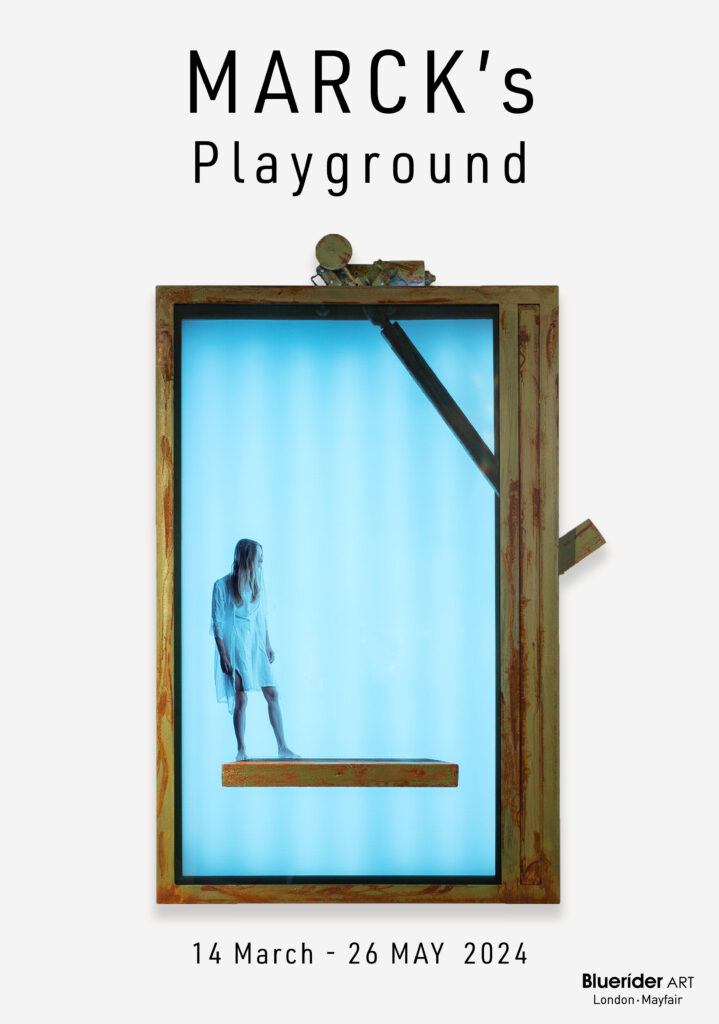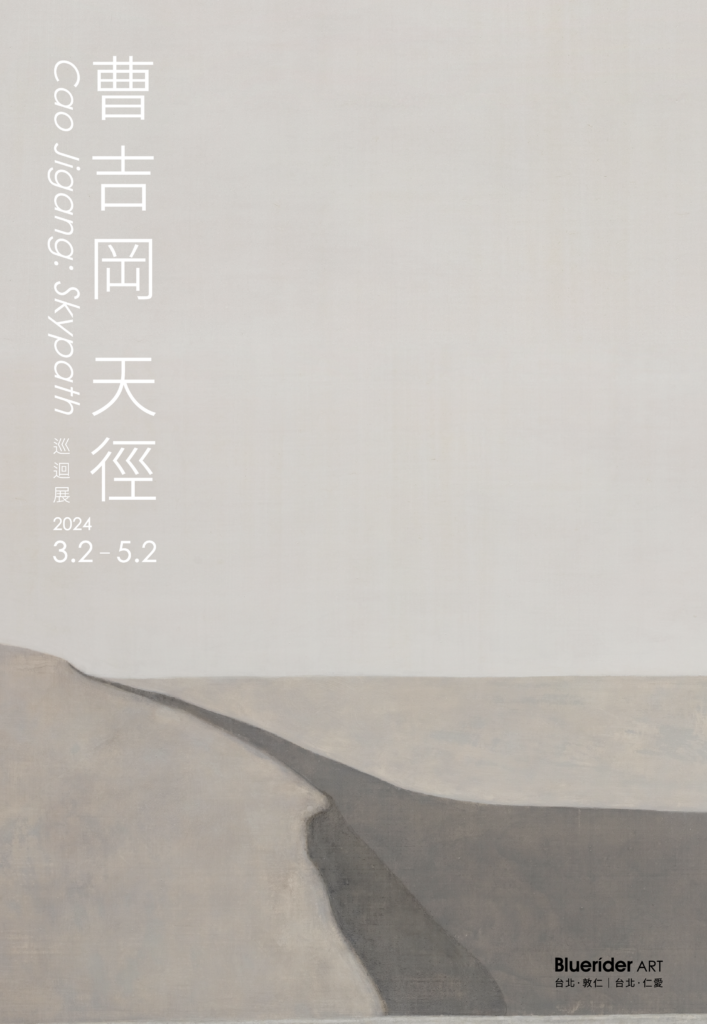Art Critique
Jan Kaláb
彼得 · 沃爾夫 Petr Volf
A renowned Czech editor for architecture and art journals, art critic, curator, and author of several publications on art and architecture.
PARALLEL WORLDS
Parallel Worlds
彼得 · 沃爾夫 Petr Volf
If we look back on the twenty-five years that have elapsed since Jan Kaláb made his first graffiti piece, we see a surprisingly rich body of work cutting across genre boundaries and seeking new challenges at regular intervals. He makes people's heads spin. He forces them to look around unwittingly. He gives them a reason to raise their eyes because he's placed a little statue on the ledge of the second floor of an apartment building, or to fleetingly check the sidewalk they're walking on because he's transformed it into a huge, horizontal painting. As soon as they notice, they tread carefully,as if walking on the pebbles of a Zen garden. With his artistic practice, Kaláb undermines the customary drabness of public space.
Art critics often have a problem finding one word to characterize Jan Kaláb. They hesitate between calling him a graffiti writer, sculptor, muralist or painter. Each of these labels is correct, yet at the same time imprecise, being a simplification: He does all of the above concurrently, setting all his activities into motion at the same time; they overlap and influence each other.Sometimes it's as if we were witnessing Gesamtkunstwerk in action - the combining of various disciplines into one cohesive whole, where everything suddenly functions in a striking synthesis.
Kaláb has been an artist since the moment he decided to go to Kampa Island on the Vltava River with a spray can after nightfall. At the age of fifteen he discovered not only his art, but the meaning of his life. He was evidently talented and graffiti aficionados who kept track of the pieces produced on Prague's walls by Cakes, as he called himself at the time, thought they were in many ways a revelation. Kaláb's practice helped change the public's view that "sprayers" were nothing but ordinary vandals, their primary concern being to boost their own overinflated egos. He had successful negotiations with the authorities to set aside legal walls, looking for appropriate locations that would best suit his large, carefully composed forms. He also started inserting textual content into some of his pieces, making comments on the world around him, primarily on the wall in Těšnov- today we'd say they were something akin to status updates.Even after so many years, looking at photographs that could now be considered historic, it makes for interesting reading. His written views are engaged in the true sense of the word, as well as being full of self-irony. He was not a rebel without a cause. He simply wanted to be seen - and to paint. He was obsessed with making art, as if someone had whispered to him that a person can only become a master artist if they work when others are twiddling their thumbs. He devoted tens of thousands of hours to a single objective within the shortest timeframe. Shortcuts do not exist, especially if the street is where you do your work and the only thing you can depend on is your alias - and only a few insiders know that you are its true holder. He improved with each new piece and by the end of the twentieth century he'd made far in excess of a thousand.He carefully documented everything he did: He didn't do this purely out of vanity, retrospectively he checked the quality of execution of each piece by examining the photographs. Besides his home city Prague, Cakes could be found on walls or trains practically all over Europe: Vienna, Berlin, Hamburg, Zurich, Paris, Rome, Milan, Barcelona and London, as well as on the other side of the Atlantic in New York, the art capital of the world, where graffiti was born at the turn of the 1960s and 1970s. That's also where his resolve as a graffiti artist went through its acid test, including direct confrontation with the threat of harsh penalties, as mercilessly employed by Mayor Rudy Giuliani to clean up the city's streets.
Around 2000, he started using another nickname besides Cakes, becoming Point. It was a ground - breaking moment. At the beginning of the new millennium, Point brought a change that moved Kaláb to the forefront of progressive street artists within a global context.He became one of the first to leave the wall behind and make graffiti in three dimensions - sculptures and objects on the boundary between spatial installation, sculpture and architecture, which went on to reap successes at numerous international expositions.Jan Kaláb is genuine. That's a fundamental prerequisite for an artist who doesn't intend to follow the mainstream. It has a lot to do with his obstinacy and tenacity: He tries to find solutions to everything himself and is unwilling to follow the reigning trends - he wants to be the one setting them! He is effectively an autodidact, allowing him to be a one-of-a-kind art innovator. Although he studied at art schools, it was primarily to try to find solutions to his own creative issues, rather than to let anything be dictated to him. He initially attended an art-focused high school, subsequently applying to study at the Vysoká škola uměleckoprůmyslová v Praze, or VŠUP (Art, Architecture and Design School in Prague), where he studied architecture, later transferring to the school's sculpture studio. At each step, he quickly realized that an excessively strict form of tuition wasn't to his liking.
For the same reason, he transferred to the Akademie výtvarného umění v Praze, or AVU (Academy of Fine Arts in Prague), the most important art school in the Czech Republic.At AVU he finally gained the freedom he'd been dreaming about. Professor Jitka Svobodová recognized his potential and didn't push him into anything that didn't fit his focus. He graduated in 2006 with an excellent degree. His entire dissertation entitled Tady je tam (Here is There) was devoted to the graffiti phenomenon, presenting it as a genre extending across many other art disciplines. He transformed Prague into his own open-air gallery, as well as putting into play cameras and the element of time.The appraisal included the following: "He is the only artist in this country who managed to elevate this marginal art discipline to the level of distinctive forms, without relinquishing his basic starting points, including the use of lettering, his signature (Cakes or Point), work with form, color, its contrasts, as well as other attributes." In his case, there was nothing to find fault with.
Members of the examination committee were surprised by the unprecedented quantity and quality of the work presented, some admitted that it was the first time they'd met a graffiti artist in the flesh. The dissertation defense took place in Veletržní palác (Trade Fair Palace), which houses the National Gallery's collection of modern and contemporary art, and in part fulfilled a missionary function,symbolizing the injection of current art energy into somewhat of a fossilized institution.Jan Kaláb became the first graffiti artist in history to receive a master's degree from the Academy of Fine Arts in Prague. As if he was proving the words he'd once written on the wall under Chotek's Bend, not far away from Prague Castle: "If I want to do something, I don't ask if I can do it..."
下一個決定性的時刻是他在布拉格Vysočany 維索常尼的一個前變電站中獲得了一間工作室。他不再需要在外面的街上工作,也不再需要查看天氣預報來擔心會不會下雨。隨著地點的改變,他也改變了他的藝術媒介。就好像地點決定了接下來會發生什麼事情。從 2007 年開始,他在畫布上創作了不特定於某個特定位置的繪畫,不考慮由框架限定的表面。他用刷子和丙烯顏料換掉了他在製作大件作品時也會用到的噴霧罐和滾筒。他必須掌握這項技術,他花了幾個月的時間才獲得自信,讓他能夠捕捉到自己的幻覺。從主題上講,他從上次中斷的地方繼續;他在畫布上繪製了他的別名 Point,逐漸將其簡化為空間中的幾何元素。走上合法的藝術道路,他研究了自己實踐的本質,分析和詮釋了迄今為止他作品中最強大的方面。2008年,他剛完成畫家的轉型,就在 Trafo 畫廊舉辦了他的第一次個展——同時慶祝了他的三十歲生日。它獲得了極好的評價。藝術評論家和策展人 Jiří Machalický 伊日·馬查利基在 Lidové noviny 《人民報》上的評論中不遺餘力地讚美:『他的畫作完美地考慮了構圖,汲取了兩次世界大戰期間建構主義的線索,Mondrian蒙德里安或Doesburg杜斯伯格的抽象。藝術家的畫作自由而充滿活力,也體現了對顏色關係的微妙感覺。』這個有趣的“現象”也被藝術理論家 Karel Srp 卡雷爾先生在他的文章 Visuté roviny《懸浮平面》中記錄下來,該文章發表在 Kaláb 克拉在 Trafo 畫廊的第二次個展(2011 年)的目錄中。在那時,這位藝術家已經磨練了他早期的繪畫能力,使它們更加精確,並將它們發展和提升到一個更高的水平。Srp 還認為 Kaláb 克拉的藝術方向與上個世紀初活躍的抽象藝術先驅有相似之處,在他看來,『 一方面由完全相交的平面構成的純幾何空間,另一方面是擺脫了依賴重力的宇宙空間…… 』他觀察到 Kaláb 克拉沿著他自己的軌跡到達了這一點,而不是採用已經存在的藝術詞彙。此外,他提請注意藝術家未來發展的另一個值得注意的方面:『Kaláb克拉從幾個基本的先決條件中構建他的視覺世界,以兩種對比鮮明的形式為代表——球體和立方體,圓形和正方形。這些已成為他進一步發展的資源。』無限空間中的幾何體,或穿透繪畫的多個層次,現在是他創作其作品決定性的基礎。除了鞏固他的藝術簽名外,第二個展覽的重要性在於這位 30 歲的藝術家首次以他的名字 Jan Kaláb 楊・克拉出現。
In 2013, Jan Kaláb 's introduction to the catalog of his solo exhibition Děravé plány (Alternate Plan(e)s) in the Chemistry Gallery included several philosophically inclined questions that he posed to himself: "I often ask myself whether one can exhaust inspiration. Can I reach a point where I can't continue? Does any kind of end point exist at all?" His answer was that there is no end, and each point one reaches is another gateway to yet another world - the closer we approach it, the more it begins to encompass us. "Suddenly we are inside it," he explains, "and we begin to see more points on the new horizon. Once a person sets out on a pilgrimage like that, they're guaranteed to have fun throughout their lives. And the fact that sometimes you can't see a single star because they're obscured by clouds, doesn't mean they're not there in the distance." A short while later, he passed through another portal: He started painting circular and organically formed paintings, confirming his stated belief in the infinity of artistic possibilities.By coincidence he took the plunge in New York, which he talks about as the most energetically charged city; unnerving, yet urging a person to do compelling work. Years before, when he was there adorning subway trains, the twin towers of the World Trade Center were still standing. This time round he had a studio in Brooklyn where he had peace and calm to make abstract works reflecting the atmosphere of the pulsating metropolis.He found understanding: "His minimalist geometric paintings are bombastic, colorful, and energetic, evoking the warmth, sounds and excitement that have been his recent experience in New York," wrote New York curator Alan Ket. "To see his paintings is to witness the depth of loneliness, color, transience, and power that exists in New York City at any given moment."
At the same time, he managed to paint huge murals in Ostrava, Prague, Bogota and London, construct three-dimensional Point pieces at street art exhibitions, come up with the concept of spherical sculptures, as well as painting on canvas - one activity generated another. Jan Kaláb is constantly on the move, wiping away the differences between great and minor art, between the milieus of street, graffiti and gallery art, doing everything with the same degree of engagement because he knows that without it he couldn't open the doors that allow him to see the stars in the Universe. No one steps in the same river twice. With his practice, Jan Kaláb is the personification of Heraclitus' understanding of time. He has grasped an important truth, realizing that repeating something successful leads to stagnation. No one knows what he will do in the next moment. He may not even know it himself. However, we can not only hope, but we can be sure, that it will come as a surprise.
藝術家介紹
Jan Kaláb
(Czech Republic, b.1978)
畢業於捷克布拉格藝術學院(Academy of Fine Arts in Prague),現居住創作於布拉格。捷克塗鴉先驅的楊・克拉Jan Kaláb 30年創作,持續走在一條非傳統藝術家之路,從街頭塗鴉走入純白空間,以點出發,發展出圓的形變及3D立體雕塑,將戶外狂放濃縮在幾何形變畫布上。曾代表捷克在上海世界博覽會捷克館展出,作品收藏於捷克和斯洛伐克國家博物館、巴西國家藝術博物館、中國德基美術館、韓國烏山美術館,更獲DIOR、Tiffany等國際精品及眾多私人收藏。
Currently




